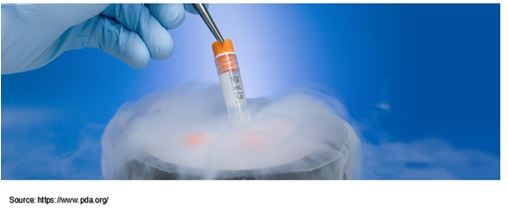Cryopreservation: Cryo-preservation is a technique that uses carbon dioxide or liquid nitrogen to preserve organelles, cells, tissues, organs, or any other biological structures that are prone to damage due to unregulated chemical kinetics.
The chemicals and enzymes stop acting on the biological structures at extremely low temperatures.
Cryoprotectants are used to coat the matter to be frozen to avoid damage by the ice crystals that form at low temperatures.
IVF specialists use this technique to preserve semen, embryos, oocytes, and any other matter important for future reproduction in the case of a patient probably who has cancer or any other detrimental medical condition.
Dr. Hrishikesh Pai, an eminent IVF specialist in Mumbai, can be consulted to solve your predicament.
Dr. Pai is backed by his career panning for 4 decades and has the reputation of maximum success in the number of IVF he has carried out so far.
Not only is he an IVF specialist, but he is also a pioneering force in the field of ART. He has set up centers all over India under the following names: Bloom IVF center, Budget fertility center, and Babies and Us.
You can contact Dr. Hrishikesh Pai through the portals of clinicspot.com, practo.com. lybrate, justdial.com, and many other well-known portals.
Natural cryopreservation:
All of us know that bears, frogs, and many other species hibernate during the winters. What exactly is going on in these species of animals when they are in hibernation mode.
Research shows that when the water bears survive the winters, they are basically surviving the freezing by replacing their internal water with sugar trehalose, preventing it from crystallization that damages the cell membranes.
Wood frogs can also survive the freezing of their blood and other tissues because they can store urea in their tissues, and liver glycogen is converted to large quantities of glucose. A combination of urea and glucose acts as cryoprotectants. This limits the ice that forms and reduces the osmotic shrinkage of the cells.
This study formed the basis of cryopreservation of human organs, cells, tissues, etc.
Also Read: Hair loss, treatments, and transplant- Dr. Harikiran Chekuri
It was in 1954 that cryopreservation was first applied to human materials. It resulted in the 3 pregnancies from insemination using frozen sperm.
The process of slow programmable freezing:
Slow Programmable freezing is the process in which the freezing is controlled by cooling the cells at -196o C over several hours.
This technique allows sufficient water to leave the cell, reducing the number of ice crystals formed.
This technique resulted in the first successful human frozen embryo birth in 1984.
Since then, gradual cooling has been used to freeze, thaw and freeze again in liquid nitrogen.
This is the process of cryopreservation. The materials used as cryoprotectants are glycerol and dimethyl sulfoxide.
Several studies indicate that IVF using frozen embryos and eggs gives better results than fresh embryos and eggs.
Preserving Embryos:
When the process of IVF has resulted in more than 1 viable embryo, it is frozen for further use if needed.
Studies have been carried out to see if the children born of frozen embryos are different from those born naturally. They do not have any birth deformities or developed abnormalities.
Ovarian tissue preservation:
Women opt for cryopreservation of ovarian tissue under 2 circumstances.
1. is that she is battling cancer and wants to preserve her reproductive function
2. She is planning for late pregnancy and wants to preserve her reproductive function.
The surgeon will extract a part of the ovary and send it for cryopreservation.
When the patient is ready or capable of conceiving, the ovarian tissue is thawed and planted near the fallopian tube, where it starts producing new eggs allowing normal conception.
Also Read: What are the causes of recurring miscarriages? Can PIGT help?
Oocyte preservation:
Oocyte preservation is where the eggs are extracted, frozen, and stored for later use. The eggs can be thawed, fertilized, and planted in the uterus as embryos when required.
Preserving Semen:
Once the semen is preserved using cryopreservation, it can be successfully used indefinitely.
It can be used for sperm donation or for men undergoing vasectomy or cancer therapy.
Testicular tissue:
Cryopreservation of immature testicular tissue is in the developing stages to avail reproduction in young boys who might be undergoing gonadotoxic therapy.
Also Read: What are the chances of twins with IVF?
Conclusion:
Dr. Hrishikesh Pai has never shied away from adopting and mastering new technological advancements, and it is the precise reason he has a successful reputation.
Please consult him without hesitation for your condition that may need you to resort to cryopreservation.


 Cricket news17 hours ago
Cricket news17 hours ago
 Cricket news18 hours ago
Cricket news18 hours ago
 India News18 hours ago
India News18 hours ago
 India News17 hours ago
India News17 hours ago
 India News18 hours ago
India News18 hours ago
 Entertainment14 hours ago
Entertainment14 hours ago
 Cricket news13 hours ago
Cricket news13 hours ago






